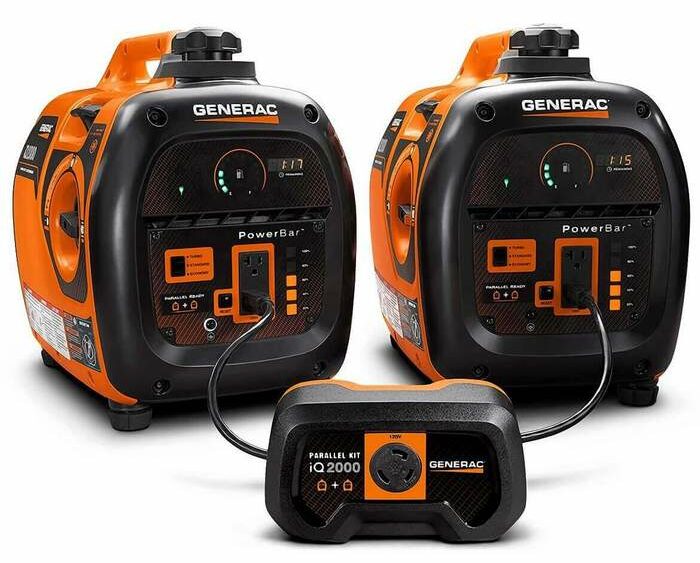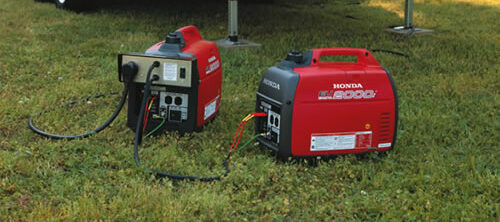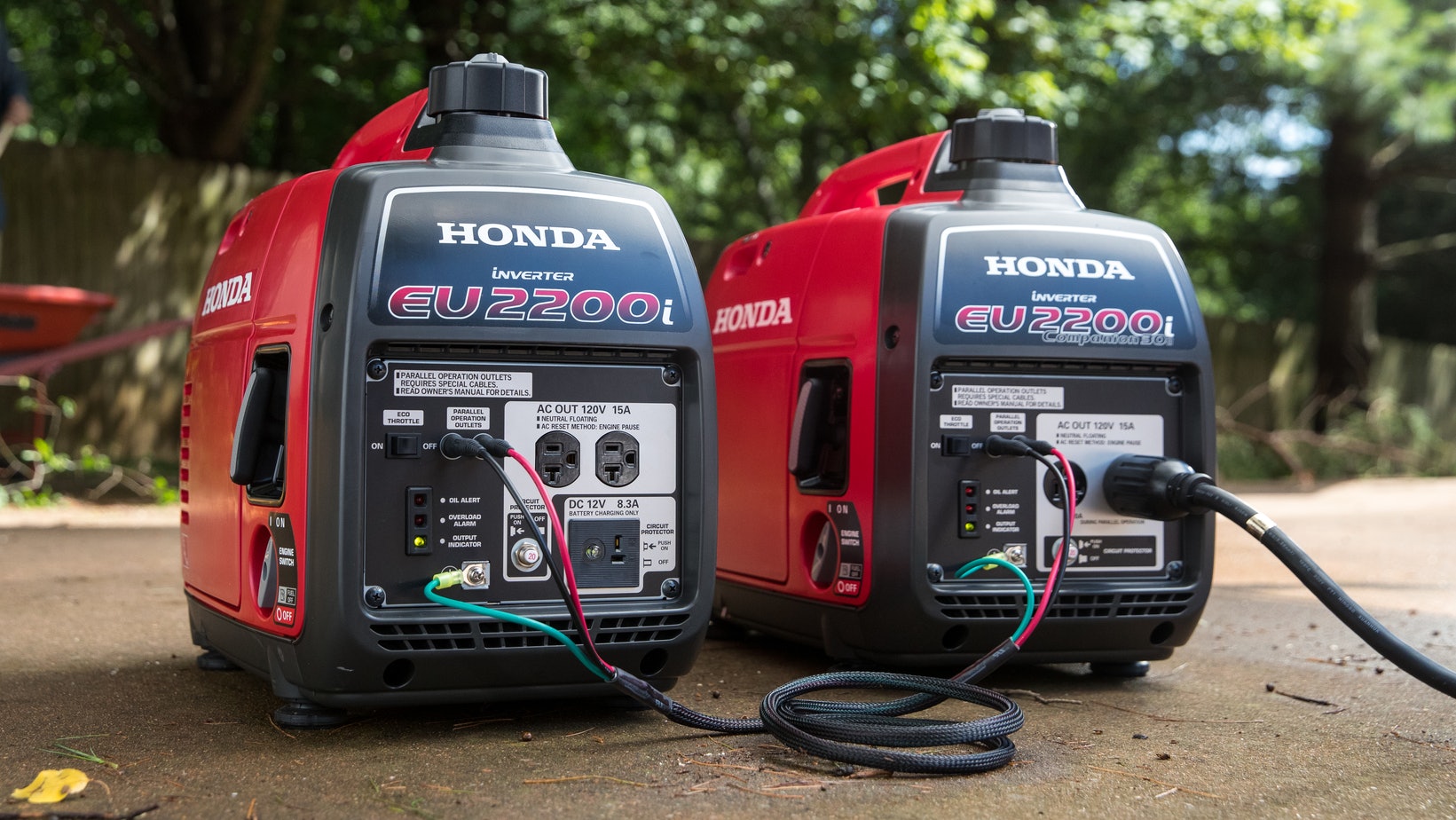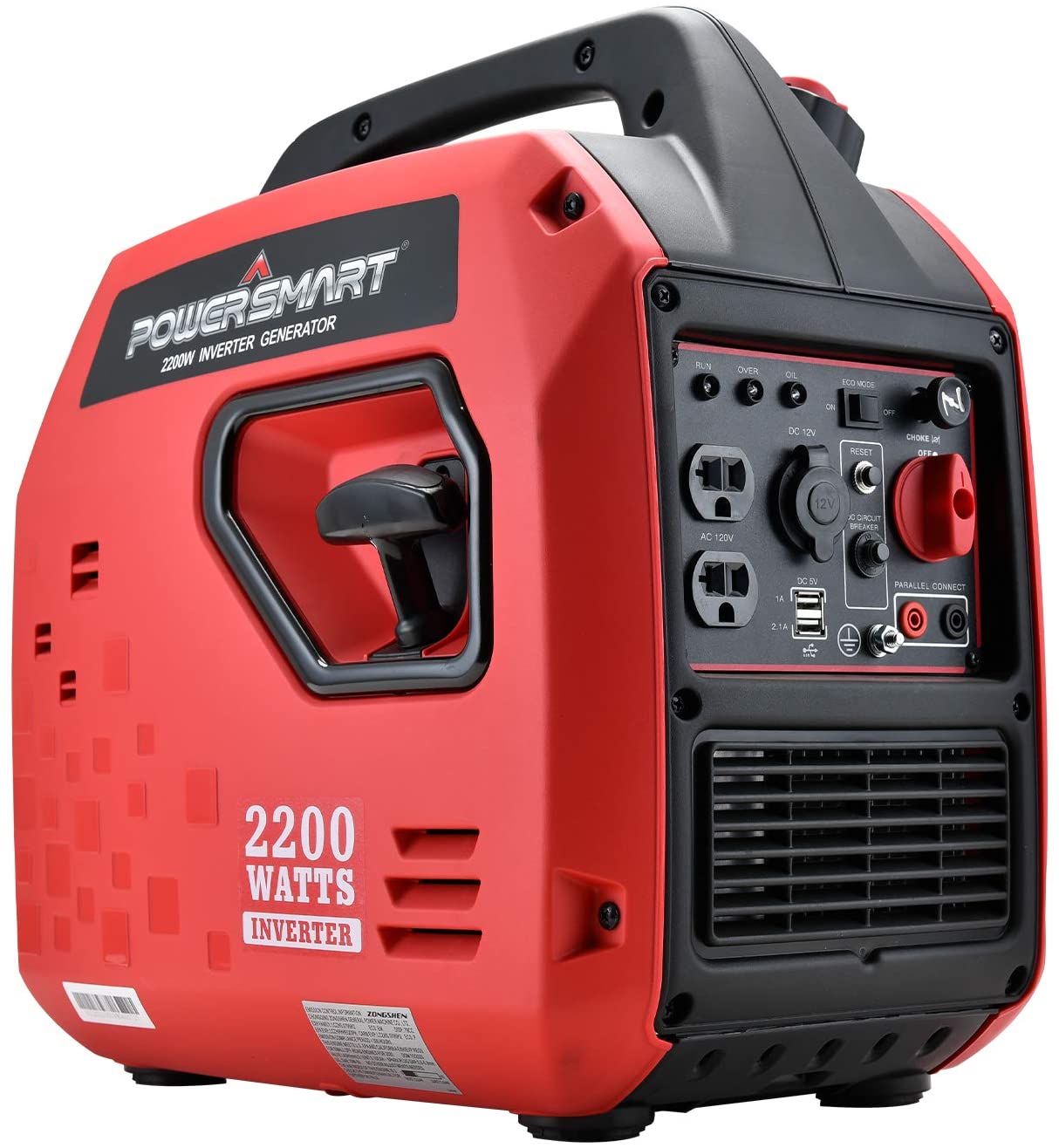Paralleling two generators means connecting two machines using a parallel electrical network to double the power output. This connection is usually made when you need to run an appliance that requires more energy than a single generator can offer. Generally, it is easier to join generators with similar power outputs or those that belong to the same brand.
If you are using a generator that is capable of parallel connections, then the process is much easier to follow through successfully. However, if your inverter generator lacks this capability, then it is going to become a slightly complicated operation. Usually, you need the correct parallel connection kit and wires before attempting to join two different size generators.
Can Two Non-Inverter Generators Be Paralleled?
 Technically, you can parallel two non-inverter generators. To pull through, you would need a voltmeter and a tiebreaker. You will require to sync these generators and phase match them before running them parallel to one another. Nevertheless, this process is highly complicated, does not give 100% power output, and can damage your generator.
Technically, you can parallel two non-inverter generators. To pull through, you would need a voltmeter and a tiebreaker. You will require to sync these generators and phase match them before running them parallel to one another. Nevertheless, this process is highly complicated, does not give 100% power output, and can damage your generator.
If the waveforms of non-inverter generators do not match, they will not sync, and the connected machines could overload. Therefore, you are better off paralleling two inverter generators since the sync and frequency are easily matched.
If you are using a pair of different size generators, the process could work, but it will not be a straightforward matter. In this case, the two generators should feature the same frequency and voltage. If these factors aren’t aligned, some complications could arise.
Connecting Generators in Parallel
As already mentioned, paralleling generators will work best if they have the same output and belong to one brand. However, this does not mean that you cannot parallel generators that are dissimilar.
For unequal machines, use a parallel cable or parallel kit; though the latter is easier to handle and needs little experience. There are sis lead wires in the kit which have a pair of ground connectors and four power connectors.
Typically, the parallel kit has a manual that clearly defines the instructions to follow for the process to be successful and avoid power-related issues. Also, you will need to connect the generator with the ground ports.
If there are minus (-) or plus (+) signs in the generator’s parallel port, they must be properly linked like in the manual. After connecting, you don’t need to stay and monitor the power output of the generators.
If both generators are capable of parallel linkage, then the power output will automatically increase after paralleling. Still, there aren’t many generators that can be connected in parallel since this feature is mostly found in small and medium-sized models.
Load Sharing When Paralleling Two Different Size Generators
 The load sharing between two different-sized generators is equal after being connected. The parallel kit will constantly monitor load sharing and it will always remain balanced regardless of the appliance being powered.
The load sharing between two different-sized generators is equal after being connected. The parallel kit will constantly monitor load sharing and it will always remain balanced regardless of the appliance being powered.
If there is an increase in the power demand, both generators will increase their power output equally. This ensures that one system does not get overloaded and become unstable in the process.
Summing Up
While you can parallel two different size generators, you must consider some factors. For starters, the generators should have equal voltage and frequency so that their load sharing is equal. Moreover, the kilowatt capacity of the generators should be equal so that there is no overload on one system.
Once these issues are addressed, you can easily parallel two different size generators.

